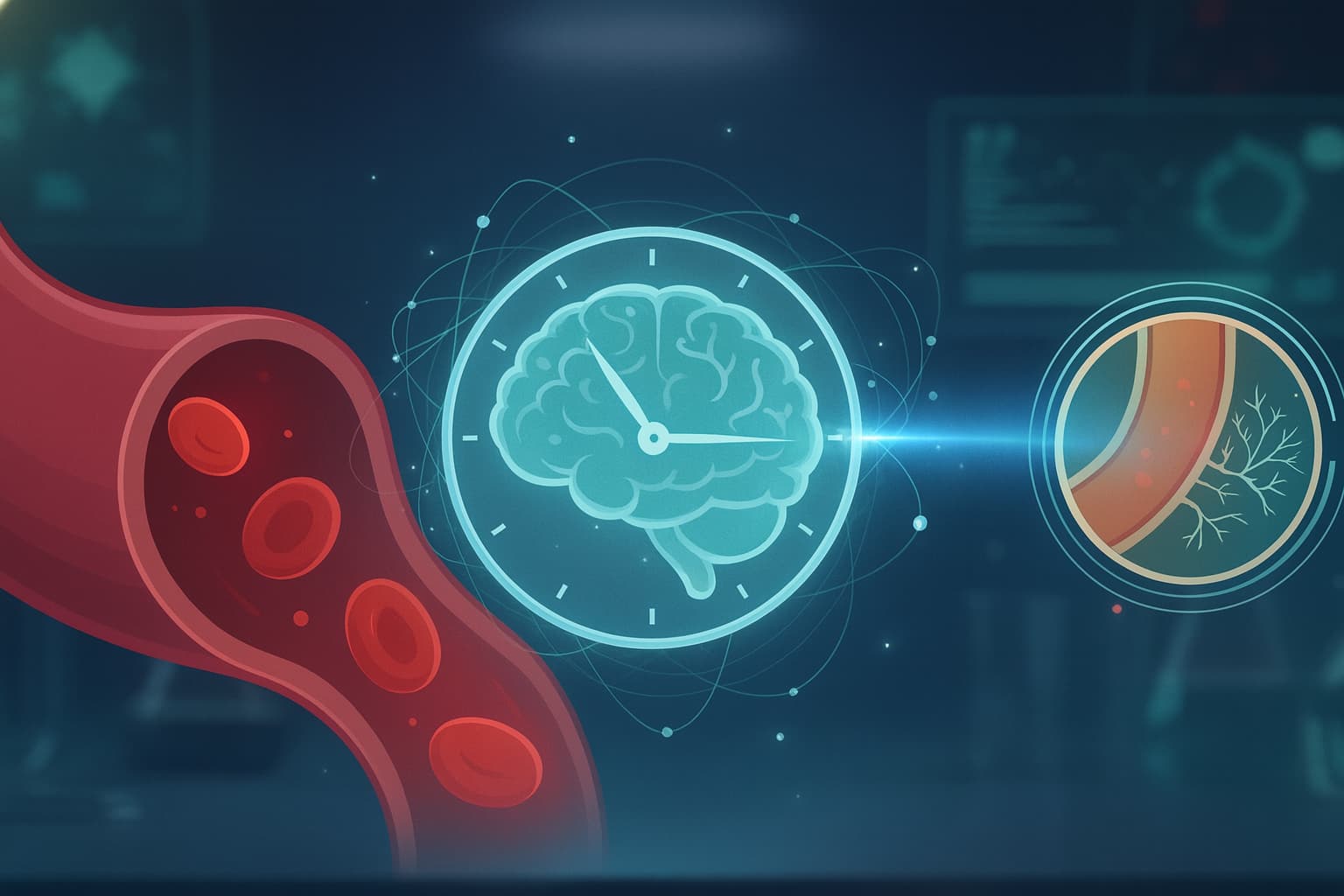A landmark Nature Aging study has introduced a new generation of “organ-specific proteomic aging clocks” that quantify how fast each major organ in the body is aging—using only a blood sample. The research, drawing on tens of thousands of participants across the UK, China, and the United States, identifies the brain and vascular system as the most consequential determinants of healthspan and lifespan. It also provides a molecular blueprint for practical steps individuals can take to slow organ-specific aging.
The scientific breakthrough
Blood contains proteins released by tissues throughout the body. By mapping each protein back to its organ of origin using large expression atlases, researchers built eleven clocks: ten organ clocks (brain, heart, arteries, liver, kidney, pancreas, intestine, lung, immune system, muscle) plus a whole-body clock. Each predicts chronological age, but more importantly, the difference between predicted and actual age—the “age gap”—reveals whether an organ is aging faster or slower than expected.
The clocks were trained on 43,616 UK Biobank volunteers using ~3,000 plasma proteins measured by advanced Olink assays. Validation in China Kadoorie Biobank and the Nurses’ Health Study confirmed that the results generalize across geographic and ethnic populations.
The brain dominates future disease and mortality
Among all organs, proteomic brain age emerged as the strongest predictor of virtually every major aging outcome:
- Dementia risk: Each +1 SD increase in brain age gap nearly doubles future dementia risk, independent of APOE genotype, cognitive testing, or traditional Alzheimer’s biomarkers.
- Mortality: Brain aging predicted all-cause mortality better than any other organ and outperformed common systemic biomarkers.
- Mental health and neurodegeneration: Elevated brain age gap was linked to future depression, anxiety, bipolar disorder, and Parkinsonian outcomes.
- Brain structure: Accelerated brain aging corresponded to lower gray-matter volume, greater white-matter damage, and MRI signatures of neurovascular decline.
In individuals carrying APOE4, accelerated brain aging was especially harmful, creating a multiplicative effect on dementia risk.
Arterial, metabolic, and inflammatory aging: the other key pillars
The artery aging clock was nearly as strong in predicting lifespan and multimorbidity. Its protein signatures highlighted extracellular-matrix degradation, endothelial dysfunction, and chronic low-grade inflammation.
Across all organ clocks, faster aging correlated with:
- Elevated hs-CRP, IL-6–linked inflammatory tone
- High ApoB and atherogenic lipoproteins
- Hyperglycemia and insulin resistance
- Higher liver (ALT/AST) and kidney (BUN/creatinine) stress markers
- Sedentary behavior, smoking, poor diet, and abnormal sleep patterns
These associations align with the idea that chronic inflammation and vascular deterioration are early upstream drivers of multisystem aging.
What individuals can do now
While commercial versions of these proteomic clocks are not yet available, the molecular patterns provide clear, actionable signals:
- Prioritize neurovascular health. Control blood pressure aggressively; maintain ApoB in the optimal range 20–60 mg/dL; avoid midlife obesity; protect sleep; minimize heavy drinking; and sustain regular aerobic and resistance exercise.
- Lower systemic inflammation. Keep hs-CRP low through weight control, diet quality, and physical activity; address periodontal disease; avoid smoking; limit chronic stress.
- Improve metabolic efficiency. Use diet, exercise, and—when clinically appropriate—GLP-1 or SGLT2 therapies to maintain low fasting insulin and stable glucose.
- Adopt brain-protective behaviors. Regular exercise, Mediterranean-style diet, 7–8 hours sleep, cognitive engagement, and minimizing sedentary time support younger brain proteomic profiles.
- Monitor emerging biomarkers. Neurodegenerative markers like NfL and GFAP, already clinically measurable, reflect elements of the brain clock and may be useful for high-risk individuals.
The larger implication
This study reframes aging as a set of organ-specific molecular trajectories—not a single number. The brain and arteries emerge as central levers of longevity, and the biological pathways they reveal point to a practical guide: protect neurovascular integrity, control inflammation, stabilize metabolism, and maintain lifelong cardiorespiratory fitness.
Full Open Access Paper:
https://www.nature.com/articles/s43587-025-01016-8
